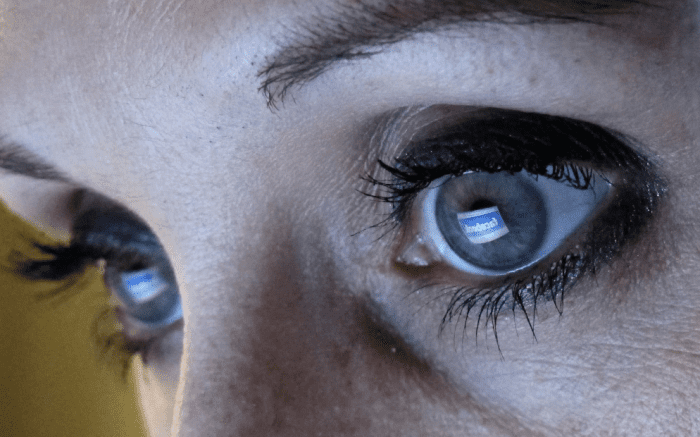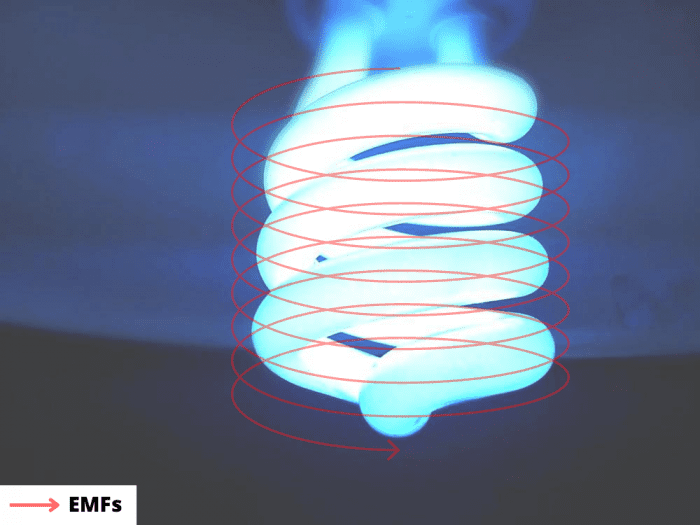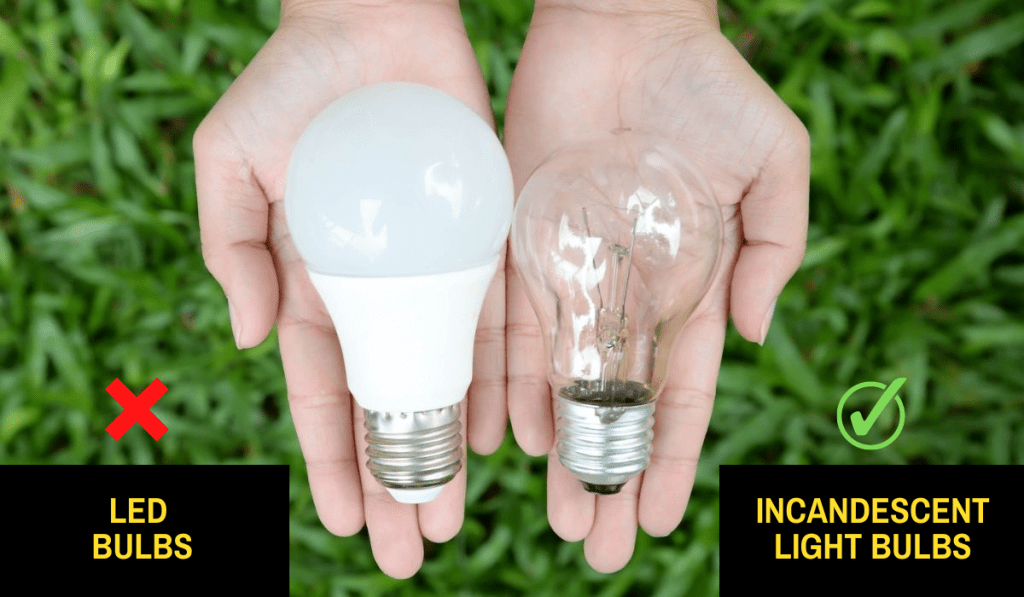It is raining LED lights. LED lights are everywhere around us. They have become the most popular option for lighting our homes, offices, streets, stores, even cars. The whole technology is made with LED lights, even our smartphones, laptops, and TVs.
We will go from all the benefits of LED lights to all possible harmful effects. Are LED lights bad for your eyes? Are LED lights safe? What about the children’s eyes? If you are curious about all the pros and cons of LED lights, keep scrolling and find the answers to your questions.
Are LED Lights Bad for Your Eyes?
Harmful effects of LED lights for adults
Are LED lights bad for your eyes? Besides the incredible benefits, there are still concerns about LED lights. LED lights may damage your eyes and disturb your sleep.
LED lights may hurt your eyes
A study known as ANSES (from Agency for Food, Environmental and Occupational Health and Safety) showed that short-term exposure to intensive blue light might cause Phototoxic effects. Long-term exposure to lower-intensity blue LED light may also increase the risk of AMD (age-related macular degeneration).
Our eyes react to blue light, and high exposure to this kind of light can cause eye diseases. But it is not proven for all average users, which means it can be a problem for people who already have existing eye conditions.
Besides eye diseases, high exposure to LED blue light may be harmful to people associated with seizures and migraines. This may be problematic for individuals who have sensitivity to eye strain, headaches, fatigue, and seizures.
LED lights may disturb the sleep
LED lights use blue light, which can also disturb normal sleeping patterns. Blue lights send information to our brain that is awake time. Using them at night may lead to eye strain and speed up your mind instead of slowing it down. Most electronic devices are made with led lights, which means if you are used to browsing on social media and watching TV before bedtime, you may struggle to sleep.
According to Harvard Medical School, blue LED lights may be great for daytime to alert our body, but they might become a problem at night. Blue light exposure lowers the production of melatonin more than any other type of light. Another study showed that individuals who wear blue light protection glasses produce melatonin more than those who do not during the night shift.
There are lots of reports that say using electronic devices before bedtime may damage your sleep. It is recommended to turn the LED lights and electronic devices off before going to bed to avoid sleep issues.
Harmful effects of LED lights on children
Children’s pupil diameter and focal length of the eyes are different from adults’. Another fact is that young children’s transparency of the crystalline lens is way more different than the adult’s. It is located behind the iris, and its primary function is to allow focusing. In very young children, the crystalline lens is more transparent than in adults.
Most parents leave a light on in the baby’s room which is a common mistake. Most pediatricians recommend leaving the children to sleep with the lights turned off. Baby’s eyes are more sensitive than adults. In the darkness, the body produces melatonin which is a hormone that helps to regulate sleep.
Avoid artificial lights in baby’s rooms to avoid interrupting sleep. Warm light is more recommended for those rooms.
Screen time risks
Childhood myopia or nearsightedness. Myopia is very common and causes difficulties in seeing distant objects. One of the main causes of myopia can be LED lighting from tablets and smart display devices. Keep in mind to teach children good screen habits like holding a distance at least 18 to 24 inches from the display. Good habits may prevent digital eye strain too.
Digital eye strain. It results in eye discomfort and vision problems while viewing digital screens. The most common symptoms are headaches, blurred vision, dry eyes, and back pain.
Poor sleep. Screen time before bed may cause less sleepiness and melatonin production. Besides the harm that blue light can cause, exposing your child to a screen at night may interrupt its sleep.
LEDs and EMFs
LED lights do emit electric and magnetic-field radiation (EMF). They even emit dirty electricity, which can be harmful to your and your family’s health. LED lights emit EMF radiation in the form of radio waves. The only reason that connects LED lights with EMFs is the fact that LED lights create Dirty Electricity.
Dirty electricity means an increased amount of EMF radiation in your home or workplace. If the power reaches a frequency that is high enough, it may pass through the walls of the home or office and radiate EMF energy.
There are many types of light bulbs on the marketplace so that you can choose the best ones for your home and office. Keep in mind that all kinds of bulbs, more or less, give some level of EMF radiation.
Sources of EMF radiation
- Radio and TV signals
- Radar, MRI (Magnetic Resonance Imaging) devices, industrial equipment, and satellite stations
- Microwave ovens
- Cordless telephones.
- Cell phone base stations
- Computer, tablet, and TV screens (LED display devices)
- Wireless network (Wi-Fi)
- Smart meters and smart lights
How LEDs work
LED bulbs are made to give more light with less energy. They have 8 to 10 times longer lifetimes than other regular light bulbs, and they are not producing heat. Because of their long lifetime, they are also ECO friendly by reducing millions of carbon emissions.
LED lights are designed to be more bright and cost-effective. They are phosphor-coated on the inside to absorb the UV light. They consume less electricity, and the remainder is sent back to the wiring system, which means they cause dirty electricity. Dirty electricity emits high levels of low frequency that cause harm to hypersensitive people. Related: Best Dirty Electricity Filters
Impact of LED on the health
A study showed that high levels of dirty electricity might increase the risk of childhood leukemia. It can also affect people with EMF radiation sensitivity, which can force the brain to work hard to control the eye movement and result in headaches. Blue lights from LED lights emit a wide range of radiation that damages the vision.
Because of the high level of blue light, LED light can cause serious eye health issues. Besides the beneficial sides of LED usage, you must know that every light might be dangerous if you are exposed too long. Almost every smart display device is made with LED and can damage your retina if you do not use protective glasses.
Blue light may cause early Age-related macular degeneration, Digital eye strain (eye dryness, irritation, tired eyes), Retina damages, photosensitivity, and sleeping issues. So basically, if you spend a lot of time exposed to LED lights, the chances of getting eye damage are increased.
Ways to Reduce the EMF Levels from Light Bulbs
There are many bulbs on the market that require less electricity and generate lower EMF radiation. You may search for incandescent light bulbs instead of LED or smart bulbs. Some of the LED light bulbs are also smart bulbs that require Wi-Fi and Bluetooth signals, which means besides the dirty electricity, they also emit ELF/EMF radiation. Related: Is Bluetooth Harmful?
Incandescent light bulbs
Keep LED bulbs away from the nightstand. If you have LED lights in the bedroom or living room, the best option is to switch the LED with an incandescent light bulb. Incandescent light bulbs are the most common types of light bulbs that emit low EMF. They also generate a small amount or even no dirty energy at all.
Incandescent light bulbs produce warm light that is not affecting melatonin levels. These light bulbs are a cheap option, and they are easy to set up.
Minimizing exposure
If you are in an office that has LED lights, there is a big possibility you can not replace them with an incandescent light bulb. As an alternative, you can open the windows and blinds to allow the natural light to get inside the office during the day. If the office is bright enough from the daylight, you can also turn off the lights. This option reduces the EMF radiation and allows the sun to boost your mental health.
You can also practice this for your home. There is no need to use LED lighting throughout the day, so keep in mind to use the maximum amount of the daylight produced by the sun.
Light bulbs to avoid
Avoid buying smart bulbs that use Bluetooth or Wi-Fi signals. Smart lights are LED-based light bulbs that increase the EMF radiation levels and produce a high amount of dirty energy. Smart lights may be trendy and convenient, but they increase the risk of high radiation danger. They produce a higher level of radiofrequency radiation, which causes harm to overall health.
Specialized glasses
Eye health is very important. If you can not avoid LED exposure, you should invest in specialized glasses to protect your eyes. There are lots of protective glasses that block the blue light that LED lights and LED devices spread. Blue light protection glasses block the harmful rays and do not allow them to reach and damage your retina. Related: How to Protect Eyes From LED Light
Alternative Light Bulbs
Most of the new types of light bulbs emit radiation. It does not come from the bulb itself but from the dirty energy that is created by the wirings.
Incandescent light bulbs
This light bulb is the oldest type of bulb you may find on the marketplace. They use electricity to heat the wire filament to provide soft white light. These bulbs are cheap and widely available. Incandescent light bulbs are an ideal option for a nightstand area because they do not affect melatonin production as blue light bulbs do.
Unfortunately, incandescent lights have the worst efficiency and bad lifespan in the marketplace. The average incandescent light bulb lasts around 1,200 hours. But these light bulbs produce less health risks compared to the new smart lights.
Halogen light bulbs
Halogen light bulbs emit white “daylight” light. Compared to incandescent bulbs, these bulbs prevent tungsten evaporation. They use 25% less energy and last three times longer than the traditional incandescents. Halogen light bulbs are also recyclable in some areas, which makes them eco-friendly.
These bulbs run hotter than incandescent ones, so touching them with bare hands is not recommended. Halogen bulbs produce blue light, which is not recommended for rooms where you sleep. Having a halogen light in the bedroom can lead to sleeping inability. Related: Are Halogen Bulbs Safe?
Compact Fluorescent Light bulbs
CFL bulbs last much longer than incandescent, and they are also 75% more efficient. This kind of light bulb contains mercury that emits UV light when it is in contact with electricity. Because they contain mercury, these bulbs may spread toxic vapor if they get broken.
There is also a warning about these lights, no light bulbs are 100% safe when they get in contact with electricity. The light that CFL light bulbs spread may cause eye strain and blurry vision. These light bulbs produce less dirty electricity than LED ones.
Conclusion
Technology comes everywhere with us, and we can not avoid it. Most of us know about how harmful it can be for our health, especially for our eyesight. Are LED lights bad for your eyes? The answer will be 100% YES. Any light can be bad for our eyes, especially LED, because we all use smart devices all the time.
We get exposed to blue light from smartphone screens, computer screens, TV screens, street LED lights, and so much more. Blue light is the main danger for our eyes. To prevent eye damage issues, it is recommended to use protection glasses and avoid watching TV or scrolling on social media before bedtime.
LED lights are also dangerous for infants because of their sensitivity to light. Their eyesight is not that developed, so there is a possibility of causing eye diseases at an early age. The best option is to avoid LED lights in a room where the children are sleeping.



